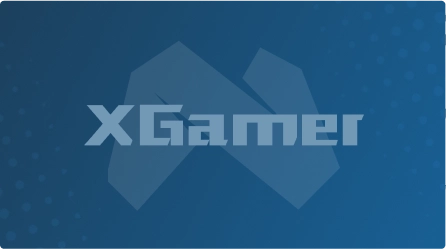
Routine Review – My Strange, Scary, Good Work Shift
Reviewed on:
PC
Platform:
Xbox Series X/S, Xbox One, PC
Publisher:
Raw Fury
Developer:
Lunar Software
Rating:
Teen
There was a 20-minute period early in my playthrough of Routine where I walked back and forth between rooms and through hallways in this game’s abandoned, defunct, and seemingly malfunctioning lunar station in search of one simple thing: my own ID number. Papers plaster the surrounding walls, explaining that every person on the station must carry their ID badge with them at all times, including me. I look everywhere for that badge, needing to input my ID into a computer terminal to advance forward… well, almost everywhere. Crucially, I don’t look down at my chest, where my ID badge hangs nonchalantly. The ID I searched for 20 minutes to find was with me all along, attached to my moon suit. This admittedly embarrassing lesson reshaped my approach to Routine, paving the way forward for a sublime and highly tactile puzzle adventure that kept me glued to my mouse and keyboard.
Routine isn’t filled with video game puzzles; it felt less like playing a game throughout my eight hours with it, and more like an elaborate sci-fi-themed escape room entirely based on logic. You won’t discover obtuse and nonsensical solutions like something you’d find in a zombie-infested police station, for example, but rather, codes, numbers, and remedies placed precisely where they should be. In this sense, Routine required me to rewrite my approach to its puzzles. I’m wary of using the word immersive, which varies from person to person, but Routine clicked for me when I placed myself in the shoes of this engineer – a guy whose shift today brought him to a decrepit lunar station to use computers and analog terminals to figure out what the hell went wrong. Of course, the narrative journey he then goes on speaks to something more ancient, more maternal, than the 1980s-inspired tech he interfaces with, but ultimately, Routine is about a strange and bad shift at work. Most everything in Routine happens through the lens of your Cosmonaut Assistance Tool (CAT), a square gun-like tool that is able to connect to the technology of this space station in a variety of ways. At first, it does little more than project tabs on marked walls to pull up things like the save button, your objectives, and saved media. To do that, you have to look at your CAT, press a button on it, then aim it at the specified wall to pull up the tabs. It’s the first taste of just how tactile Routine gets, and as you upgrade your tool with more modules, you unlock the ability to shock robotic stalkers, access secure doors, and find hidden messages.
To do any of these tasks, you must interact with the CAT by pulling it up and pressing a button or pulling a trigger back or slotting in a cassette-like object… or something – there is no automation here. On paper, it’s an exhausting routine of pressing buttons before doing the thing you want to do, but it’s so diegetic that it’s impossible to imagine Routine without this tactility. I loved every puzzle presented to me, which often involved finding hidden codes on walls or in lockers, plugging them into terminals to unlock a new clue, and progressing to the next stage of the puzzle (often a new room or location to explore). Though watchful robots that occasionally swarm attempt to get in the way, requiring you to zap them or run, and monstrous creatures try to kill you, this antagonistic behavior is a small aspect of Routine. They aren’t harmless, but if you’re saving often, they do little to set back your progression, ultimately making them feel inessential to what makes Routine great. There are no “unlocks” or in-game celebratory moments in Routine upon completing a puzzle – just the dull droning of the electricity powering this station, the occasional beeps from monitors, your breath, and the knowledge that you get to advance forward. And yet, it’s some of the most exciting puzzle-solving I’ve experienced because of how enticing the reward of moving deeper, getting one step closer to the answer to, “What is going on?” Musical flairs from composer Mick Gordon magnetically mix with the gorgeous late-‘70s future aesthetic, itself flush with crunchy film grain and an intoxicatingly impressive attention to detail; the tactileness of Routine feels like a crucial element to rounding out the atmosphere, and knowing I needed to press a button here and open a secure door with my CATs small security module screen there while an unholy being stalked after me just a few feet behind added a thrill that left my mouse damp with sweat. Gross, like the gaping chest that would swallow me if I failed. Routine is a survival-horror game in the lightest of senses. There are robots and creatures to run/hide from occasionally, and you have little in your arsenal to fight back, but that genre tag is a misnomer – this is a puzzle experience drenched in tension and terror. With your CAT tool and the wits you’d hope appear if you, yourself, were placed in this terrible situation, a seductive Pandora’s box of escape rooms awaits you.
Score:
8.5
About Game Informer's review system
 Popular Content
Popular Content Explore Topic
Explore Topic



